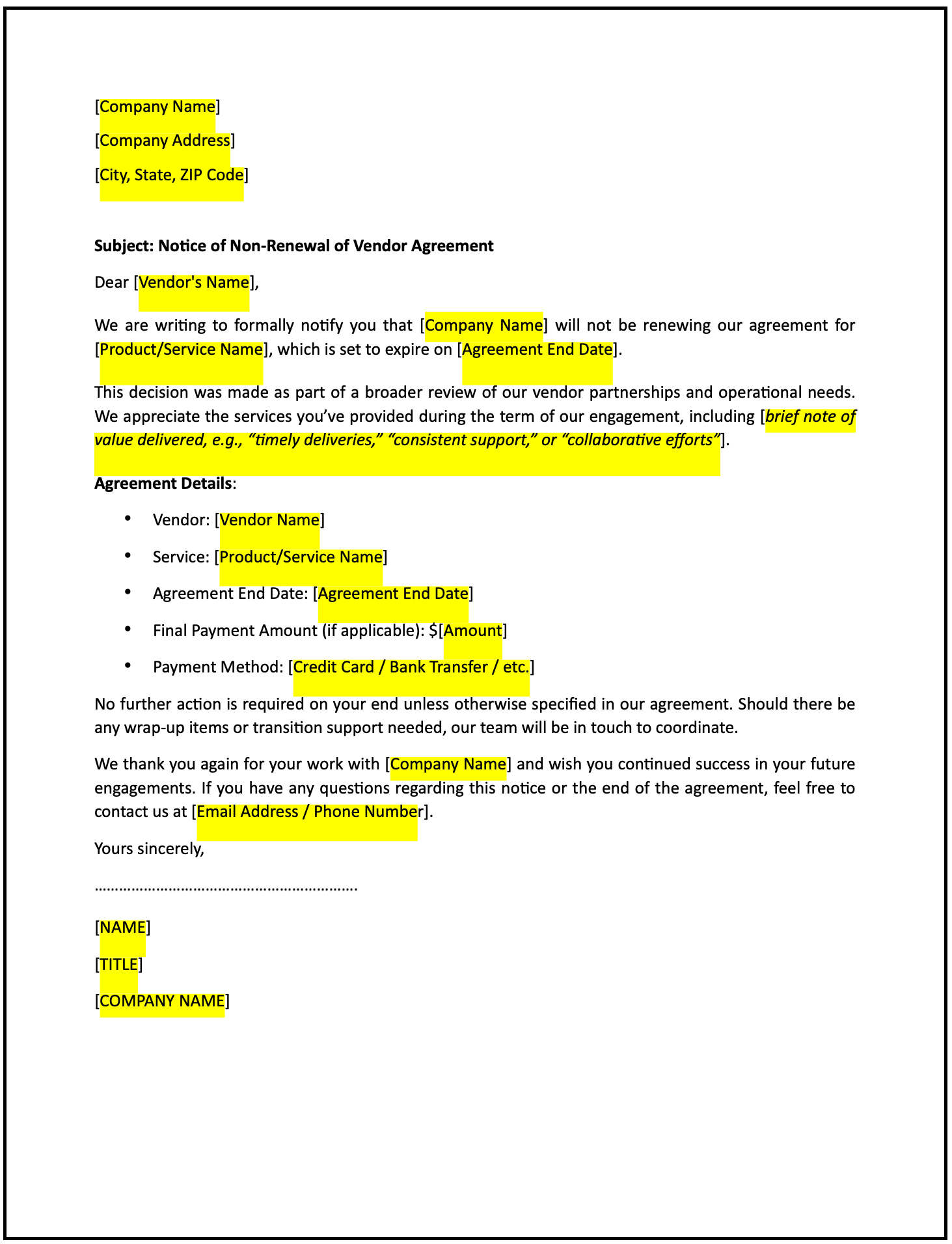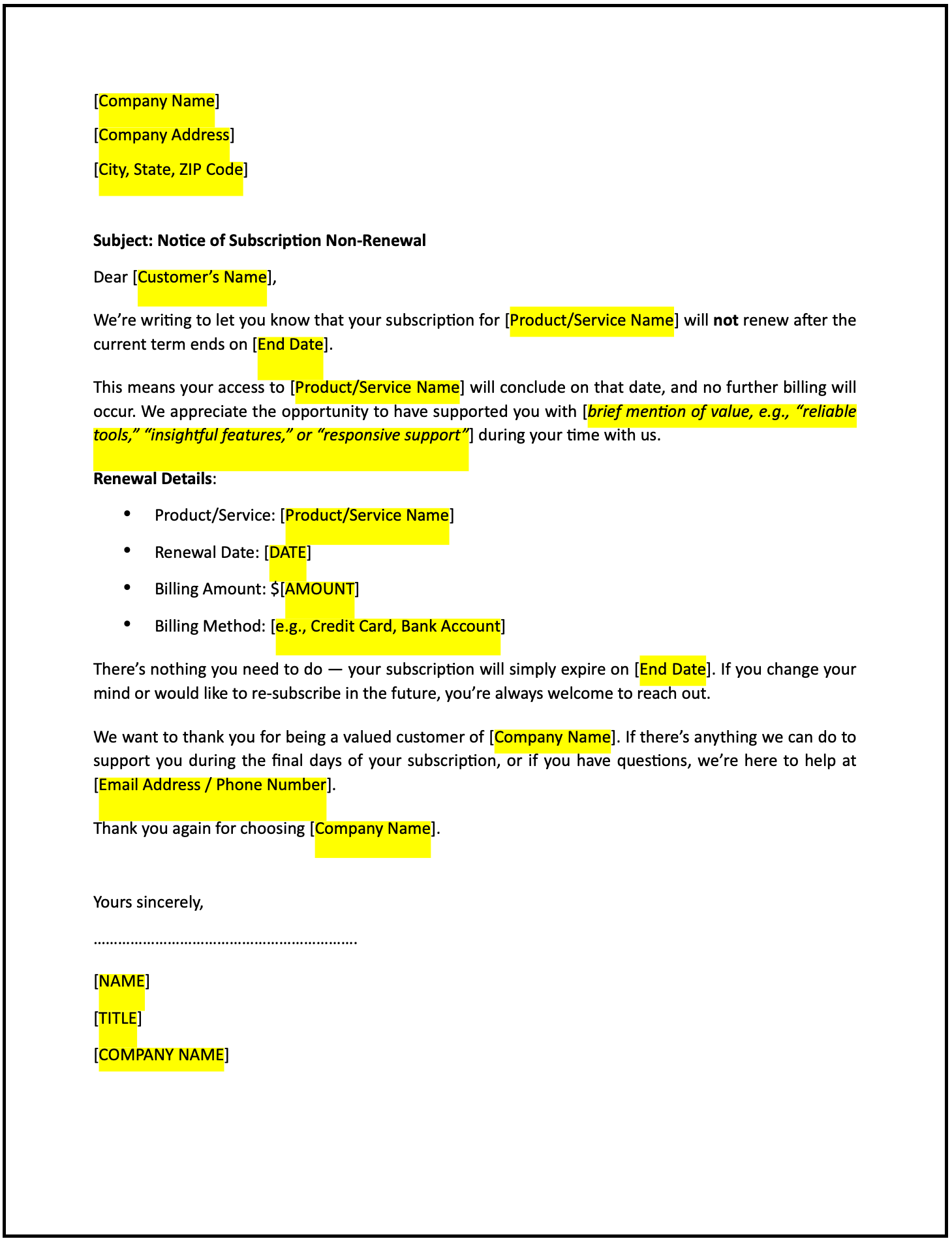Letter of request to use copyrighted material: Free template

Letter of request to use copyrighted material
A letter of request for permission to use copyrighted material is a formal way to ask the copyright owner for authorization to use their work for a specific purpose. Whether you're preparing an educational resource, creating marketing content, or publishing a report, this letter helps you communicate your request clearly, explain the intended use, and show respect for the owner’s rights.
The letter typically outlines the details of the copyrighted material, how it will be used, and any reassurances regarding attribution and terms of use. It serves as a professional record of your request and can help prevent misunderstandings later.
How to use this letter of request to use copyrighted material
- Open with an introduction: Address the copyright owner by name and explain who you are, your organization (if applicable), and why you're reaching out.
- Identify the copyrighted material: Clearly describe the work you wish to use—this might include the title, author or creator, publication details, or any identifying information that helps the owner recognize the material.
- State the intended use: Explain how the material will be used, including the format (e.g., presentation, website, publication), the audience, and whether the use is commercial, educational, or personal.
- Request permission: Politely ask for the owner’s consent to use the material for your stated purpose. Be specific about the scope of the permission you’re requesting.
- Offer reassurance: Confirm that you will credit the owner appropriately and respect any limitations they wish to set. This shows your intent to use the material responsibly.
- Provide a timeframe: If relevant, mention the period you intend to use the material or whether the use will be ongoing.
- Include actionable steps: Invite the owner to confirm their approval in writing or to discuss the request further. You may offer to send a permission form or agreement for signature.
- Maintain a professional tone: Use clear, respectful language that reflects your appreciation of the owner’s rights and interest in building a positive working relationship.
- Provide contact information: Share your full name, role or affiliation, and contact details so the owner can respond easily.
Benefits of using a letter of request to use copyrighted material
- Promotes clarity: Helps the copyright owner clearly understand what you are requesting and how their work will be used.
- Reflects professionalism: Demonstrates that you value the creator’s rights and are willing to follow proper procedures.
- Encourages collaboration: Shows openness to discussion and potential terms that benefit both parties.
- Builds trust: Transparent communication builds goodwill and sets the tone for a respectful interaction.
- Supports legal compliance: Ensures your use of the material is authorized and properly documented.
Tips for writing an effective letter of request to use copyrighted material
- Be specific: Provide detailed information about the material and how you intend to use it.
- Use professional language: Keep your tone respectful, courteous, and clear.
- Provide context: Briefly explain why you chose this material and how it fits into your broader project or goals.
- Highlight mutual benefits: Mention how this use may also support the copyright owner’s visibility, message, or reach.
- Include actionable steps: Make it easy for the recipient to approve the request, whether by signing a document or replying via email.
- Keep it concise: Avoid unnecessary detail while ensuring all important points are covered.
Frequently asked questions (FAQs)
Q: What details should I include in this letter?
A: Include a description of the copyrighted material, the intended use, and any conditions or limitations you are willing to follow.
Q: Should I personalize the letter?
A: Yes, addressing the owner by name and referencing specific details about their work demonstrates attentiveness and professionalism.
Q: Who typically sends this letter?
A: Educators, researchers, businesses, or individuals seeking to use copyrighted material typically send this letter.
Q: How formal should this letter be?
A: The tone should be professional, respectful, and focused on fostering trust and collaboration.
Q: When should this letter be sent?
A: Send the letter well in advance of the intended use to allow time for the owner to review and respond.
Q: Can this letter include proposed terms?
A: Yes, proposing terms such as attribution or non-commercial use can make the request more appealing.
Q: Is acknowledgment from the recipient required?
A: Yes, requesting acknowledgment ensures the recipient has reviewed and approved your request.
This article contains general legal information and does not contain legal advice. Cobrief is not a law firm or a substitute for an attorney or law firm. The law is complex and changes often. For legal advice, please ask a lawyer.


